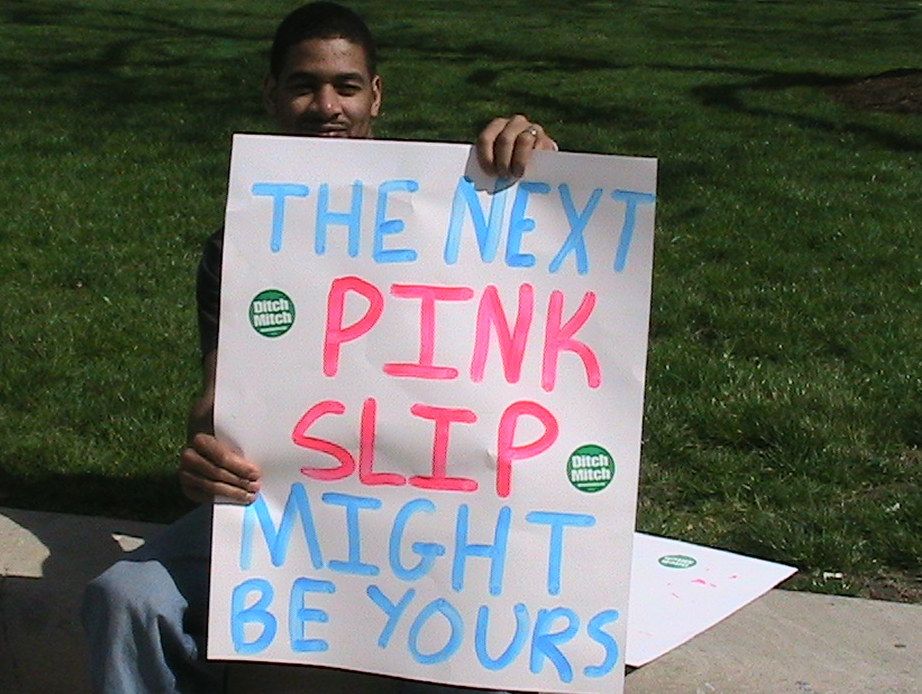
By some accounts, the U.S. is well on its way to a healthy economic recovery after the Great Recession. The Dow Jones industrial average closed at an all time high of 15,000 last month. Unemployment dropped to 7.6 percent after 175,000 jobs were created in May, and gross domestic product grew at an annual rate of 2.4 percent during the first quarter of 2013.
Ask a low-wage, part-time worker about the state of the economy and you will likely get a very different story. Recent data indicates that the majority of new jobs created in the post-recession period have been part-time positions with few benefits. Eight million Americans working part-time jobs do so involuntarily, according to a recent jobs survey conducted by the Department of Labor.
A shift to part-time work
Alternet reports that from late 2007 to May 2013, the number of part-time U.S. workers jumped from 24.7 million to 27.5 million. One in every 5 workers is now part-time, according to a 2013 Gallup poll.
In another study, the Century Foundation used data from the U.S. Bureau of Labor Statistics to show that since 2009, the number of Americans working part-time for “economic reasons” had doubled to over 9 million, the largest spike in part-time employment since it began recording part-time work in 1955.
“As they struggle to make ends meet, many will — if they can — take on multiple part-time jobs to compensate for inadequate hours and pay. Involuntary part-time employment stigmatizes workers, attacking their self-esteem and diminishing their expectations for the future. It disproportionately impacts women, younger workers and minorities,” writes Lynn Stuart Parramore, Alternet senior editor.
The National Employment Law Project published a report last year finding that mid-wage jobs — those paying between $13.83 and $21.13 per hour — made up about 60 percent of the jobs lost during the recession. But those mid-wage jobs have made up just 27 percent of the jobs gained during the recovery to date. In contrast, low-paying jobs — those paying less than $13.83 per hour — have constituted roughly 58 percent of the jobs gained since 2010.
The affordable care effect
The Affordable Care Act could be one reason for the massive shift to part-time work.
The Patient Protection and Affordable Care Act, signed into law by President Obama in 2010, contains a provision that requires large companies with more than 50 employees to provide health coverage for full-time workers.
NPR reports that Duane Davis, a former clothing stocker at a Juicy Couture store in New York City, worked 30 to 40 hours per week. He enjoyed the work environment and generally got along well with other employees.
Everything was copacetic until earlier this year, when Davis was told that he was cut to part-time work, a maximum of 23 hours per week.
“If we were ever going over those hours, they’d tell us to go home. Because we were going over the amount of hours that we were given for the week,” Davis told NPR.
He quit to search for a full-time job, a tough choice that millions are forced to make in the current job market.
Juicy Couture did not comment whether the shift to part-time work was made to avoid providing health coverage, but some companies — including Papa John’s pizza and Darden Restaurants, which owns Red Lobster and Olive Garden — have waffled on the issue in the past year.
“We’re not supportive of Obamacare, like most businesses in our industry,” said Papa John’s CEO John Schnatter last year. “If Obamacare is in fact not repealed, we will find tactics to shallow out any Obamacare costs and core strategies to pass that cost onto consumers in order to protect our shareholders’ best interests.”
Who pays?
Regardless of what corporations admit, millions saw a reduction to 30 hours or less, a move that has lowered overall wages and eliminated health insurance benefits for many across the U.S.
“We’re seeing it quite a bit. Instead of saying, ‘I want one person for 40 hours a week,’ I’ll take two people for 20 hours or 25 hours a week,” said Rob Wilson, President of Employco, a temp agency, in an NPR interview. “Your underemployed population in America just is going to increase dramatically.”
Corporate management says it is a move needed to keep prices competitive, but the cost of health care doesn’t simply disappear altogether. Rather, taxpayers will have to foot the bill when companies attempt to keep costs low by skirting health insurance obligations.
A recent study found that 300 workers at a single Wal-Mart in Wisconsin could cost taxpayers at as much as $904,000 in annual health care costs, according to CNN. Wal-Mart currently employs 1.4 million people across the U.S., but 80 percent of its employees rely on food stamps and other benefits to feed their families.
Generally, an individual can receive benefits through the Supplemental Nutrition Assistance Program if their gross monthly income is $1,211 or less. For a household of four, this increases to $2,498.
The California state legislature is currently debating a bill that would fine large companies like Wal-Mart $6,000 for each worker that uses Medi-Cal, the state’s public health insurance program.
Until more comprehensive reforms are put in place, low-wage workers will continue to take whatever they can get when jobs are scarce.
“It was a relief just to find something,” Chicago resident Amie Crawford, 56, told The New York Times.
Crawford worked for 30 years as an interior designer but took a job working as a part-time cashier after a four month job search.
Crawford says that her boss tells her, ‘I try to give you as many hours as I can, but everybody wants as many hours as they can.”


